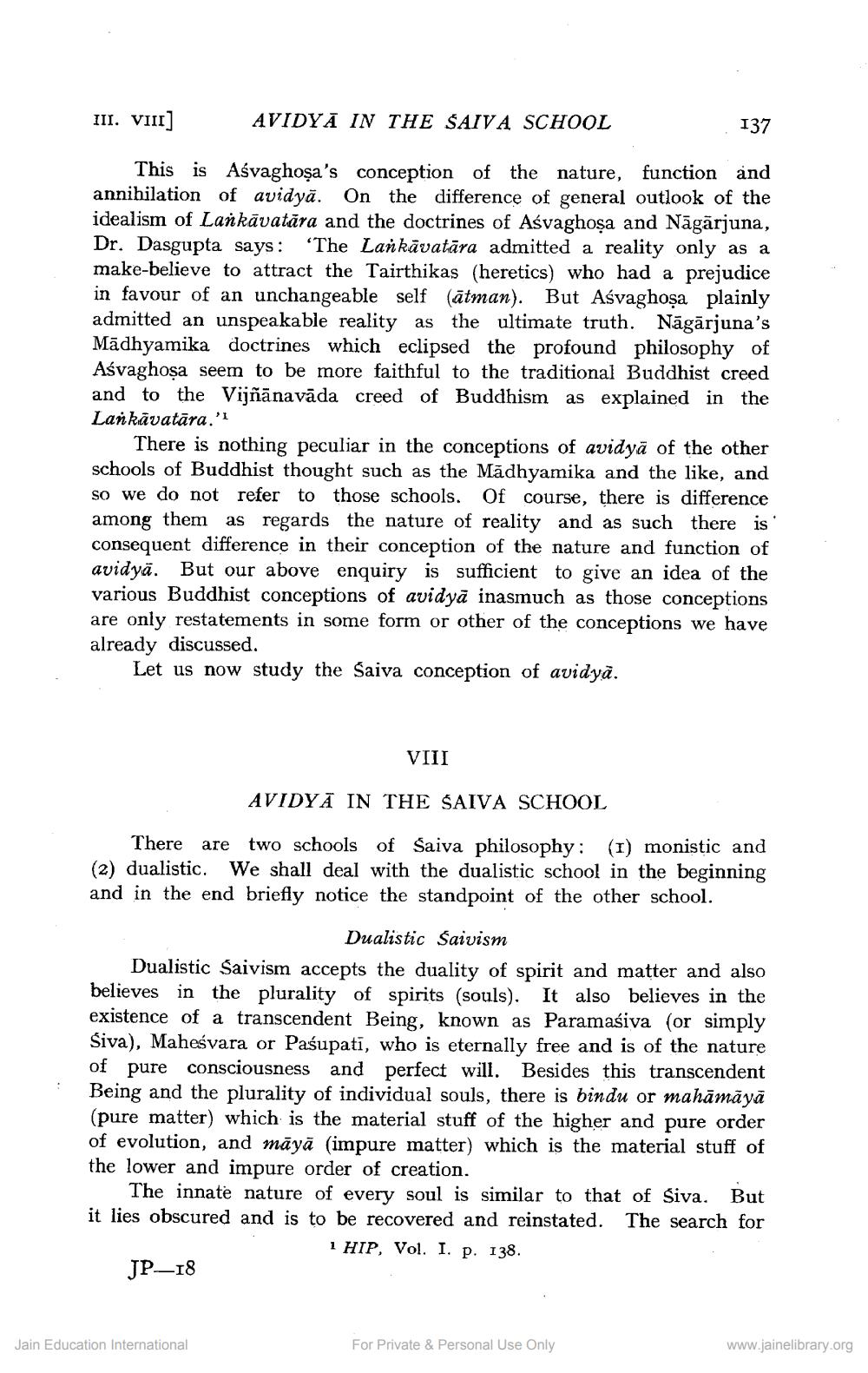________________
III. VIII]
AVIDYA IN THE SAIVA SCHOOL
137
This is Ašvaghoşa's conception of the nature, function and annihilation of avidyā. On the difference of general outlook of the idealism of Lankāvatāra and the doctrines of Ašvaghosa and Nāgārjuna, Dr. Dasgupta says: “The Lankāvatāra admitted a reality only as a make-believe to attract the Tairthikas (heretics) who had a prejudice in favour of an unchangeable self (ātman). But Aśvaghoșa plainly admitted an unspeakable reality as the ultimate truth. Nāgārjuna's Mādhyamika doctrines which eclipsed the profound philosophy of Aśvaghosa seem to be more faithful to the traditional Buddhist creed and to the Vijñānavāda creed of Buddhism as explained in the Lankāvatāra.''
There is nothing peculiar in the conceptions of avidyā of the other schools of Buddhist thought such as the Madhyamika and the like, and so we do not refer to those schools. Of course, there is difference among them as regards the nature of reality and as such there is consequent difference in their conception of the nature and function of avidyā. But our above enquiry is sufficient to give an idea of the various Buddhist conceptions of avidyā inasmuch as those conceptions are only restatements in some form or other of the conceptions we have already discussed.
Let us now study the Saiva conception of avidyā.
VIII
AVIDYA IN THE SAIVA SCHOOL
There are two schools of Saiva philosophy: (I) monistic and (2) dualistic. We shall deal with the dualistic school in the beginning and in the end briefly notice the standpoint of the other school.
Dualistic saivism Dualistic Saivism accepts the duality of spirit and matter and also believes in the plurality of spirits (souls). It also believes in the existence of a transcendent Being, known as Paramasiva (or simply Siva), Maheśvara or Pasupati, who is eternally free and is of the nature of pure consciousness and perfect will. Besides this transcendent Being and the plurality of individual souls, there is bindu or mahāmāyā (pure matter) which is the material stuff of the higher and pure order of evolution, and māyā (impure matter) which is the material stuff of the lower and impure order of creation.
The innate nature of every soul is similar to that of Siva. But it lies obscured and is to be recovered and reinstated. The search for
1 HIP, Vol. I. p. 138. JP_18
Jain Education International
For Private & Personal Use Only
www.jainelibrary.org




